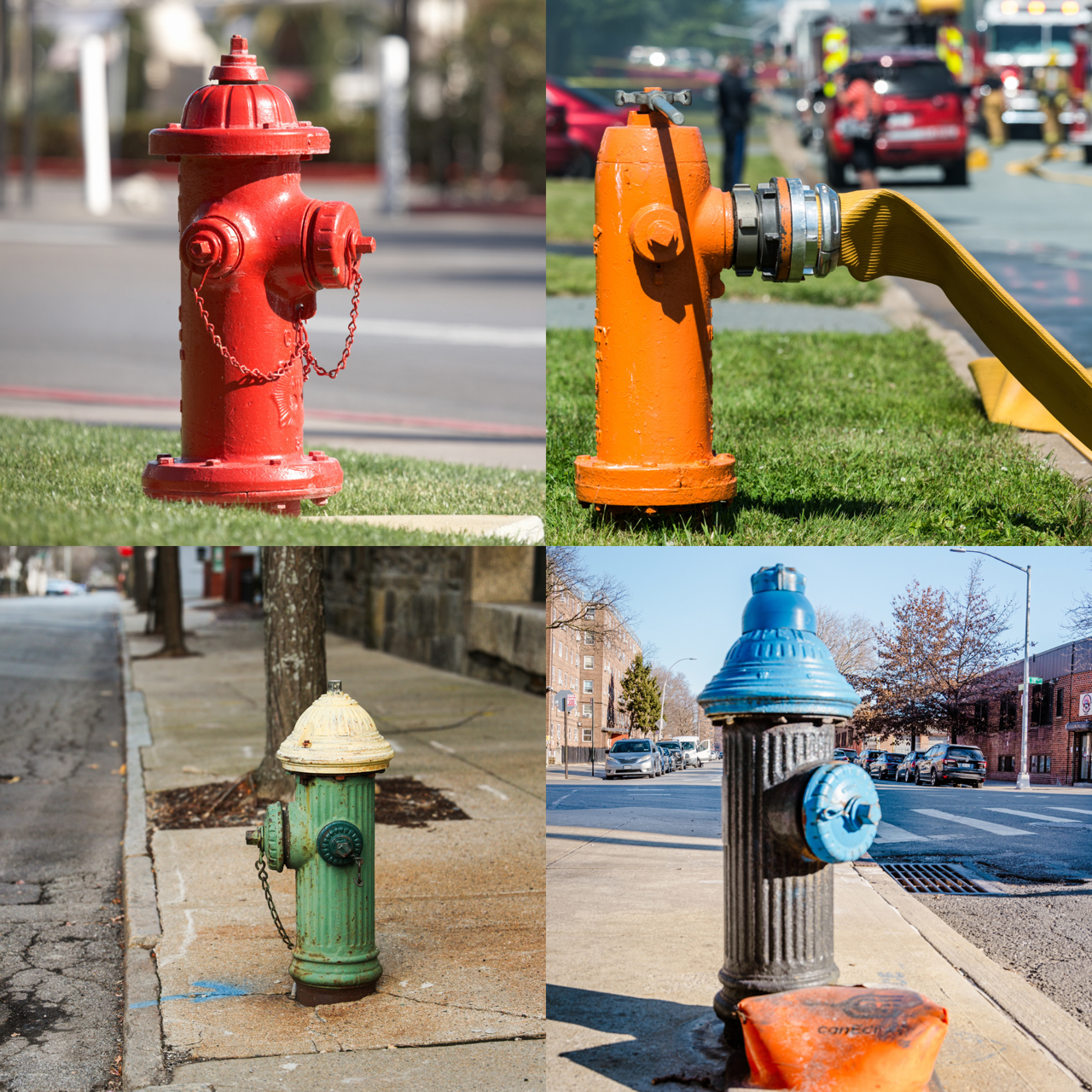By: Emergent Team
Color coding is a fast and reliable way to communicate key information, especially under emergency conditions. During a structure fire, every second counts. Hydrant color helps engine companies quickly assess water flow and choose the best hydrant for their operations without relying on guesswork or outdated maps.
Standardized color schemes also support mutual aid responses. When agencies from different jurisdictions respond together, consistent hydrant markings reduce confusion and speed up resource deployment.
NFPA Guidelines on Hydrant Color Coding
While not legally binding, the National Fire Protection Association (NFPA) offers clear guidance on hydrant color in NFPA 291. This standard helps departments color-code hydrants based on their available flow rate in gallons per minute (GPM).
According to NFPA 291:
- Red (Class C) – Less than 500 GPM: Limited flow, not ideal for firefighting
- Orange (Class B) – 500 to 999 GPM: Moderate flow
- Green (Class A) – 1,000 to 1,499 GPM: Good flow, suitable for most needs
- Blue (Class AA) – 1,500 GPM or more: Excellent flow, preferred for high-demand scenarios

These colors typically apply to the hydrant bonnet (top) or nozzle caps, while the hydrant barrel may be painted a standard color (often yellow) to indicate it’s publicly maintained and operable.
Barrel Colors: Public vs. Private Systems
In addition to flow rate, hydrant barrel colors sometimes indicate ownership and maintenance responsibility:
- Yellow – Public water system, maintained by the municipality
- Red – Private hydrant, often found on industrial or commercial properties
- Purple or Violet – Non-potable water (e.g., recycled, reclaimed, or lake water), not safe for drinking
%20Large.png)
Fire departments should regularly verify flow test data, especially for hydrants on private systems, as their condition or pressure may not meet public fire protection standards.
Local Variations Still Exist
Despite NFPA guidance, hydrant color coding can vary by city or region. Some departments develop custom schemes based on unique infrastructure, geography, or historical practices. For example, barrel colors may reflect city zones, while bonnet colors still follow NFPA flow rates.
Because of this variation, mutual aid training should always include local hydrant color conventions to avoid confusion during a shared response.
Best Practices for Fire Departments
For departments looking to implement or revise their hydrant color system, consider these best practices:
- Align with NFPA 291 to create consistency and promote interoperability.
- Maintain accurate flow test records and update hydrant colors as needed.
- Include hydrant color training in onboarding and refresher programs.
- Document color codes in pre-incident plans and digital command tools.
- Partner with public works to ensure hydrants remain visible and in working order year-round.
How Technology Supports Hydrant Awareness
Emergent’s incident command platform allows departments to integrate hydrant data—including flow rates, colors, and GIS locations—into their digital maps. This gives responding crews instant access to hydrant information from the cab or the command post.
When paired with pre-incident plans and mobile checklists, these tools ensure no time is wasted locating a viable water source.
Small Details, Big Impact
Hydrant colors may seem like a small detail, but in the fire service, small details save lives. By using consistent color coding and integrating hydrant data into modern response workflows, departments can improve both speed and safety on the fireground.
For more ways to optimize your department’s response readiness, including digital hydrant mapping and checklist tools, connect with the Emergent team. We’re here to help your crew work smarter and safer, from first dispatch to final knockdown.






